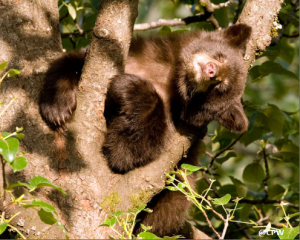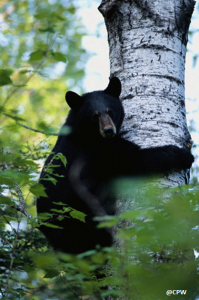By Alyssa Meier, CSU Wildlife Biology Undergraduate and CNHP Student Intern
Field season is here, and with warming temperatures, black bears are emerging from winter hibernation. Black bears can spend up to twenty hours a day covering numerous miles of ground in searching for food, which can lead to some surprising encounters while working in the field.
 |
| Young black bear snoozing in tree. Photo by Colorado Parks and Wildlife. |
Hear are some tips on what to do if you see a bear:
- Stay calm. The bear is probably just as shocked as you are.
- Stop and back away slowly. Sudden movements are often perceived as aggressive and can cause the bear to act defensively in response.
- No eye contact. Directly looking at bears is seen as a challenge.
- Speak quietly. Loud noises are perceived as aggressive.
- Don’t run. Running triggers an automatic predator response in the bears and they will see you as some pretty slow prey. Bears are naturally inquisitive creatures. Some encounters occur because the bear is just curious about what’s going on in the area. The behavior of the bear is indicative of the bear’s intentions.
 |
| Bears are very capable climbers and often seek refuge from threats in trees. |
Some common bear behaviors:
- If a bear is sitting or moving away
this is often a neutral behavior. Just go about your business. -
If a bear is standing motionless or
ignoring you, it is indicating that they just want to be left alone. As long as
you don’t start toward them, the bear will leave you be. - Climbing a tree is a show of
submission or seeking safety. Mothers will often send their cubs up trees and
sit beneath them when they encounter dangers. You’ve probably passed under a
few bears hidden up in trees already. Just keep away from the tree and give the
bears space and they’ll leave you alone. - If a bear is popping its jaw or
huffing, it is a sign nervousness or apprehension. It’s a warning for you to
back away and leave them alone.




